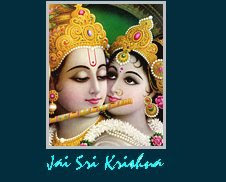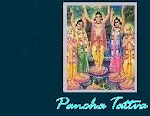i.e the post and personality.
Siva, Hara, Mrida, Rudra, Pushkara, Pushpalochana, Arthigamya, Sadachara, Sharva, Shambhu, Maheshvara, Chandrapida, Chandramouli, Vishva, Vishvamareshvara, Vedantasarasandoha, Kapali, Nilalohita, Dhyanadhara, Aparicchedya, Gauribharata, Ganeshvara, Ashtamurti, Vishvamurti, Trivargasvargasadhana, Jnanagamya, Dridaprajna, Devadeva, Trilochana, Vamadeva, Mahadeva, Patu, Parivrida, Drida, Vishvarupa, Virupaksha, Vagisha, Shuchisattama, Sarvapramanasamvadi, Vrishanka, Vrishavahana, Isha, Pinaki, Khatvanga, Chitravesha, Chirantana, Tamohara, Mahayogi, Gupta, Brahma, Dhurjati, Kalakala, Krittivasah, Subhaga, Pranavatmaka, Unnadhra, Purusha, Jushya, Durvasa, Purashasana, Divyayudha, Skandaguru, Parameshthi, Paratpara, Anadimadhyanidhana, Girisha, Girijadhava, Kuverabandhu, Shrikantha, Lokavarnottama, Mridu, Samadhivedya, Kodandi, Nilakantha, Parashvadhi, Vishalaksha, Mrigavyadha, Suresha, Suryatapana, Dharmadhama, Kshamakshetra, Bhagavana, Bhaganetrabhida, Ugra, Pashupati, Tarkshya, Priyabhakta, Parantapa, Datta, Dayakara, Daksha, Karmandi, Kamashasana, Shmashananilaya, Suksha, Shmashanastha, Maheshvara, Lokakarta, Mrigapati, Mahakarta, Mahaushadhi, Uttara, Gopati, Gopta, Jnanagamya, Puratana, Niti, Suniti, Shuddhatma, Soma, Somarata, Sukhi, Somapa, Amritapa, Sunya, Mahatejah, Mahadyuti, Tejomaya, Amritamaya, Annamaya, Sudhapati, Ajatashatru, Aloka, Sambhavya, Havyavahana, Lokakara, Vedakara, Sutrakara, Sanatana, Maharishi, Kapilacharya, Vishvadipti, Vilochana, Pinakapani, Bhudeva, Svastida, Svastikrita, Sudhi, Dhatridhama, Dhamakara, Sarvaga, Sarvagochara, Brahmasrika, Vishvasrika, Sarga, Karnikara, Priya, Kavi, Shakha, Vishakha, Goshakha, Siva, Bhishaka, Anuttama, Gangaplavodaka, Bhavya, Pushkala, Sthapati, Sthira, Vijitatma, Vishayatma, Bhutavahana, Sarathi, Sagana, Ganakaya, Sukirti, Chinnasamshaya, Kamadeva, Kamapala, Bhasmoddhulita-vigraha, Bhasmapriya, Bhasmashayi, Kami, Kanta, Kritagama, Samavarta, Nivritatma, Dharmapunja, Sadashiva, Akalmasha, Chaturvahu, Durvasa, Durasada, Durlabha, Durgama, Durga, Sarvayudhavisharada, Adhyatmayoganilaya, Sutantu, Tantuvardhana, Shubhanga, Lokasaranga, Jagadisha, Janardana, Bhasmashuddhikara, Meru, Ojasvi, Shuddhavigraha, Asadhya, Sadhusadhya, Bhrityamarkatarupadhrika, Hiranyareta, Purana, Ripujivahara, Bala, Mahahrada, Mahagarta, Vyali, Siddhavrindaravandita, Vyaghracharmambara, Mahabhuta, Mahanidhi, Amritasha, Amritavapu, Panchajanya, Prabhanjana, Panchavimshatitattvastha, Parijata, Paravara, Sulabha, Suvrata, Shura, Brahmavedanidhi, Nidhi, Varnashramaguru, Varni, Shatrujita, Shatrutapana, Ashrama, Kshapana, Kshama, Jnanavana, Achaleshvara, Pramanabhuta, Durjneya, Suparna, Vayuvahana, Dhanurdhara, Dhanurveda, Gunarishi, Gunakara, Satyasatyapara, Dina, Dharmaga, Ananda, Dharmasadhana, Anantadrishti, Danda, Damayita, Dama, Abhivadya, Mahamaya, Vishvakarma, Visharada, Vitaraga, Vinitatma, Tapasvi, Bhutabhavana, Unmattavesha, Pracchanna, Jitakama, Ajitapriya, Kalyanaprakriti, Kalpa, Sarvalokaprajapati, Tarasvi, Tavaka, Dhimana, Pradhanaprabhu, Avyaya, Lokapala, Antarhitatma, Kalpadi, Kamalakshana, Vedashastrarthatattvajna, Aniyama, Niyatashraya, Chandra, Surya, Shani, Ketu, Varanga, Vidrumacchavi, Bhaktivashya, Anagha, Parabrahmamrigavanarpana, Adri, Adryalaya, Kanta, Paramatma, Jagadguru, Sarvakarmalaya, Tushta, Mangalya, Mangalavrita, Mahatapa, Drighatapa, Sthavishtha, Sthavira, Dhruva, Aha, Samvatsara, Vyapti, Pramana, Paramatapa, Samvatsarakara, Mantrapratyayakara, Sarvadarshana, Aja, Sarveshvara, Siddha, Mahareta, Mahabala, Yogi, Yogya, Siddhi, Mahateja, Sarvadi, Agraha, Vasu, Vasumana, Satya, Sarvapapahara, Sukirti, Shobhana, Shrimana, Avanmanasagochara, Amritashashvata, Shanta, Vanahasta, Pratapavana, Kamandalundhara, Dhanvi, Vedanga, Vedavita, Muni, Bhrajishnu, Bhojana, Bhokta, Lokanatha, Duradhara, Atindriya, Mahamaya, Sarvavasa, Chatushpatha, Kalayogi, Mahanada, Mahatsaha, Mahabala, Mahabuddhi, Mahavirya, Bhutachari, Purandara, Nishachara, Pretachari, Mahashakti, Mahadyuti, Ahirdeshyavapu, Shrimana, Sarvacharyamanogati, Vahushruta, Niyatatma, Dhruva, Adhruva, Sarvashaska, Ojastejodyutidhara, Nartaka, Nrityapriya, Nrityanitya, Prakashatma, Prakashaka, Spashtakshara, Budha, Mantra, Samana, Sarasamplava, Yugadikrida, Yugavarta, Gambhira, Vrishavahana, Ishta, Vishishta, Shishteshta, Shalabha, Sharabha, Dhanu, Tirtharupa, Tirthanama, Tirthadrishya, Stuta, Arthada, Apamnidhi, Adhishthana, Vijaya, Jayakalavita, Pratishthita, Pramanajna, Hiranyakavacha, Hari, Vimlochana, Suragana, Vidyesha, Vindusamshraya, Balarupa, Vikarta, Balaunmatta, Gahana, Guha, Karana, Karta, Sarvabandhavimochana, Vyavasaya, Vyavasthana, Sthanada, Jagadadija, Garuda, Lalita, Abheda, Bhavatmatmasamsthita, Vireshvara, Virabhadra, Virasanavidhi, Virata, Virachudamani, Vetta, Tivrananda, Nadidhara, Ajnadhara, Trishuli, Shipivishta, Sivalaya, Balakhilya, Mahachapa, Tigmamshu, Badhira, Khaga, Adhirama, Susharana, Subrahmanya, Sudhapati, Maghavana, Kushika, Gaumana, Virama, Sarvasadhana, Lalataksha, Vishvadeha, Sara, Samsarachakrabhrita, Amoghadanda, Madhyastha, Hiranya, Brahmavarchasi, Paramartha, Para, Mayi, Shambara, Vyaghralochana, Ruchi, Virinchi, Svarbandhu, Vachaspati, Aharpati, Ravi, Virochana, Skanda, Shasta, Vaivasvata, Yama, Yukti, Unnatakirti, Sanuraga, Paranjaya, Kailashadhipati, Kanta, Savita, Ravilochana, Vidvattama, Vitabhaya, Vishvabharata, Anivarita, Nitya, Niyatakalyana, Punyashravanakirtana, Durashrava, Vishvasaha, Dhyeya, Duhsvapnanashana, Uttarana, Dushkritiha, Vijneya, Duhsaha, Bhava, Anadi, Bhurbhuvakshi, Kiriti, Ruchirangada, Janana, Janajanmadi, Pritimana, Nitimana, Dhava, Vasishtha, Kashyapa, Bhanu, Bhima, Bhimaparakrama, Pranava, Satpatchachara, Mahakasha, Mahaghana, Janmadhipa, Mahadeva, Sakalagamaparaga, Tattva, Tattavit, Ekatma, Vibhu, Vishvavibhushana, Rishi, Brahmana, Aishvaryajanmamrityujaratiga, Panchayajnasamutpatti, Vishvesha, Vimalodaya, Atmayoni, Anadyanta, Vatsala, Bhaktalokadhrika, Gayatrivallabha, Pramshu, Vishvavasa, Prabhakara, Shishu, Girirata, Samrata, Sushena, Surashatruha, Amogha, Arishtanemi, Kumuda, Vigatajvara, Svayamjyoti, Tanujyoti, Achanchala, Atmajyoti, Pingala, Kapilashmashru, Bhalanetra, Trayitanu, Jnanaskandamahaniti, Vishvutpatti, Upaplava, Bhaga, Vivasvana, Aditya, Yogapara, Divaspati, Kalyanagunanama, Papaha, Punyadarshana, Udarakirti, Udyogi, Sadyogi, Sadasanmaya, Nakshatramali, Nakesha, Svadhishthanapadashraya, Pavitra, Papahari, Manipura, Nabhogati, Hrit, Pundarikasina, Shatru, Shranta, Vrishakapi, Ushna, Grihapati, Krishna, Paramartha, Anarthanashana, Adharmashatru, Ajneya, Purohita, Purushrita, Brahmagarbha, Vrihadgarbha, Dharmadhenu, Dhanagama, Jagaddhitaishi, Sugata, Kumara, Kushalagama, Hiranyavarna, Jyotishmana, Nanabhutarata, Dhvani, Araga, Niyamadhyaksha, Vishvamitra, Dhaneshvara, Brahmajyoti, Vasudhama, Mahajyotianuttama, Matamaha, Matarishva, Nabhasvana, Nagaharadhrika, Pulastya, Pulaha, Agastya, Jatukarnya, Parashara, Niravarananirvara, Vairanchya, Vishtarashrava, Atmabhu, Aniruddha, Atri, Jnanamurti, Mahayasha, Lokaviragrani, Vira, Chanda, Satyaparakrama, Vyalakalpa, Mahakalpa, Kalpavriksha, Kaladhara, Alankarishnu, Achala, Ruchishnu, Vikramonnata, Ayuhshabdapati, Vegi, Plavana, Shikhisarathi, Asamsrishta, Atithi, Shatrupreamathi, Padapashana, Vasushrava, Pratapa, Havyavaha, Vishvabhojana, Japaya, Jaradishamana, Lohitatma, Tanunapata, Vrihadashva, Nabhoyoni, Supratika, Tamasraha, Nidagha, Tapana, Megha, Svaksha, Parapuranjaya, Sukhanila, Sunishpanna, Surabhi, Shishiratmaka, Vasanta, Madhava, Grishma, Nabhasya, Vijavahana, Angira, Guru, Atreya, Vimala, Vishvavahana, Pavana, Sumati, Vidvana, Travidya, Naravahana, Manobuddhi, Ahamkara, Kshetrajna, Kshetrapalaka, Jamadagni, Balanidhi, Vigala, Vishvagalava, Aghora, Anuttara, Yajna, Shreya, Nihshreyahpatha, Shaila, Gaganakundabha, Danavari, Arindama, Rajanijanaka, Charuvishaiya, Lokakalpadhrika, Chaturveda, Chaturbhava, Chatura, Chaturapriya, Amlaya, Samamlaya, Tirthavedashivalaya, Vahurupa, Maharupa, Sarvarupa, Charachara, Nyayanirmayaka, Nyayi, Nyayagamya, Nirantara, Sahasramariddha, Devendra, Sarvashastraprabhanjana, Munda, Virupa, Vikranta, Dandi, Danta, Gunottama, Pingalaksha, Janadhyaksha, Nilagriva, Niramaya, Sahasravahu, Sarvesha, Sharanya, Sarvalokadhrika, Padmasana, Paramjyoti, Parampara, Paramsala, Padmagarbha, Mahagarbha, Vishvagarbha, Vichakshana, Characharajna, Varada, Varesha, Mahabala, Devasuraguru, Deva, Devasuramahashraya, Devadideva, Devagni, Devagnisukhada, Prabhu, Devasureshvara, Divya, Devasuramaheshvara, Devadevamaya, Achintya, Devadevatmasambhava, Sadyoni, Asuravyaghra, Devasimha, Divakara, Vibudhagravara, Shreshtha, Sarvadevottamottama, Sivajnanarata, Shrimana, Shikhi-shriparvatapriya, Vajrahasta, Siddhakhadgi, Narasimhanipatana, Brahmachari, Lokachari, Dharmachari, Dhanadhipa, Nandi, Nandishvara, Ananta, Nagnavratadhara, Shuchi, Lingadhyaksha, Suradhyaksha, Yogadhyaksha, Yugavaha, Svadharma, Svargata, Svargakhara, Svaramayasvana, Vanadhyaksha, Vijakarta, Dharmakrita, Dharmasambhava, Dambha, Alobha, Arthavita, Shambhu, Sarvabhutamaheshvara, Shmashananilaya, Tryksha, Setu, Apratimakriti, Lokottaras-putaloka, Trymbaka, Nagabhushana, Andhakari, Makhadveshi, Vishnukandharapatana, Hinadosha, Akshayaguna, Dakshari, Pushadantabhit, Dhurjati, Khandaparashu, Sakala, Nishkala, Anagha, Akala, Sakaladhara, Pandurabha, Mrida, Nata, Purna, Purayita, Punya, Sukumara, Sulochana, Samagayapriya, Akrura, Punyakirti, Anamaya, Manojava, Tirthakara, Jatila, Jiviteshvara, Jivitantakara, Nitya, Vasureta, Vasuprada, Sadgati, Satkriti, Siddhi, Sajjati, Kalakantaka, Kaladhara, Mahakala, Bhutasatyaparayana, Lokalavanyakarta, Lokottarasukhalaya, Chandrasanjivana, Shasta, Lokaguda, Mahadhipa, Lokabandhu, Lokanatha, Kritajna, Krittibhushana, Anapaya, Akshara, Kantha, Sarvashastrabhudvara, Tejomaya, Dyutidhara, Lokagrani, Anu, Shuchismita, Prasamnyatma, Durjjeya, Duratikrama, Jyotirmaya, Jagannatha, Nirakara, Jaleshvara, Tumbavina, Mahakopa, Vishoka, Shokanashana, Trilokapa, Trilokesha, Sarvashuddhi, Adhokshaja, Avyaktalakshana, Deva, Vyaktavyakta, Vishampati, Varashila, Varaguna, Saramanadhana, Maya, Brahma, Vishnu, Prajapati, Hamsa, Hamsagati, Vaya, Vedha, Vidhata, Dhata, Srashta, Harta, Chaturmukha, Kailasashikharavasi, Sarvavasi, Sadagati, Hiranyagarbha, Druhina, Bhutapala, Bhupati, Sadyogi, Yogavit, Yogi, Varada, Brahmanapriya, Devapriya, Devanatha, Devajna, Devachintaka, Vishamaksha, Vishalaksha, Vrishada, Vrishavardhana, Nirmama, Nirahamkara, Nirmoha, Nirupadrava, Darpaha, Darpada, Dripta, Sarvabhutaparivartaka, Sahasrajit, Sahasrarchi, Prabhava, Snigddhaprakritidakshina, Bhutabhavyabhavannatha, Bhutinashana, Artha, Anartha, Mahakosha, Parakaiyaikapandita, Nishkantaka, Kritananda, Nirvyaja, Vyajamardana, Sattvavana, Sattvika, Satyakirti, Snehakritagama, Akampita, Gunagrahi, Naikatma, Naikakarmakrita, Suprita, Sumukha, Suksha, Sukara, Dakshinanila, Nandiskandhadhara, Dhurya, Prakata, Pritivardhana, Aparajita, Sarvasattva, Govinda, Adhrita, Sattvavahana, Svadhrita, Siddha, Putamurti, Yashodhana, Varahabhringadhrika, Bhringi, Balavana, Ekanayaka, Shrutiprakasha, Shrutimana, Ekabandhu, Anekakrita, Shrivatsalashivarambha, Shantabhadra, Sama, Yasha, Bhushaya, Bhushana, Bhuti, Bhutakrita, Bhutabhavana, Akampa, Bhaktikaya, Kalaha, Nilalohita, Satyavrata, Mahatyagi, Nityashantiparayana, Pararthavritti, Vibikshu, Visharada, Shubhada, Shubhakarta, Shubhanama, Shubha, Anarthita, Aguna, Sakshi, Akarta.
 In 1927 perhaps, there was a big solar eclipse. At that time, the Kuruksetra matha was newly started and I was the matha commander there. Prabhupada Srila Saraswati Thakura came there and arranged a spiritual exhibition that depicted how Dvaraka Krishna and the gopis met. At that time, I first heard from our Guru Maharaj why on solar and lunar eclipses, especially the solar eclipse, people come in lakhs and crores to a holy place and take bath.
In 1927 perhaps, there was a big solar eclipse. At that time, the Kuruksetra matha was newly started and I was the matha commander there. Prabhupada Srila Saraswati Thakura came there and arranged a spiritual exhibition that depicted how Dvaraka Krishna and the gopis met. At that time, I first heard from our Guru Maharaj why on solar and lunar eclipses, especially the solar eclipse, people come in lakhs and crores to a holy place and take bath. When I was in Madras, one man came to me and preached about the Ram Krishna Mission’s activities. He challenged, “You want to deliver the people, but they are dying of famine and disease. You do not go to help them, but if they die, to whom will you preach? So relief work is necessary. First give them food, medicine, and good health. After that you can give them inspiration about God. This process is good. But if they die then who will you help in a spiritual way?
When I was in Madras, one man came to me and preached about the Ram Krishna Mission’s activities. He challenged, “You want to deliver the people, but they are dying of famine and disease. You do not go to help them, but if they die, to whom will you preach? So relief work is necessary. First give them food, medicine, and good health. After that you can give them inspiration about God. This process is good. But if they die then who will you help in a spiritual way? shall try to invite and distribute, as a mediator to draw and distribute. Therefore we shall engage ourselves in the most intensified duty of serving as a mediator. This is the primary thing. “May I be deeply engaged in drawing from the upper layer, and emanate that towards the environment.” That sort of high ideal is necessary. - Srila Bhakti Rakshak Sridhar Maharaj-
shall try to invite and distribute, as a mediator to draw and distribute. Therefore we shall engage ourselves in the most intensified duty of serving as a mediator. This is the primary thing. “May I be deeply engaged in drawing from the upper layer, and emanate that towards the environment.” That sort of high ideal is necessary. - Srila Bhakti Rakshak Sridhar Maharaj-














































